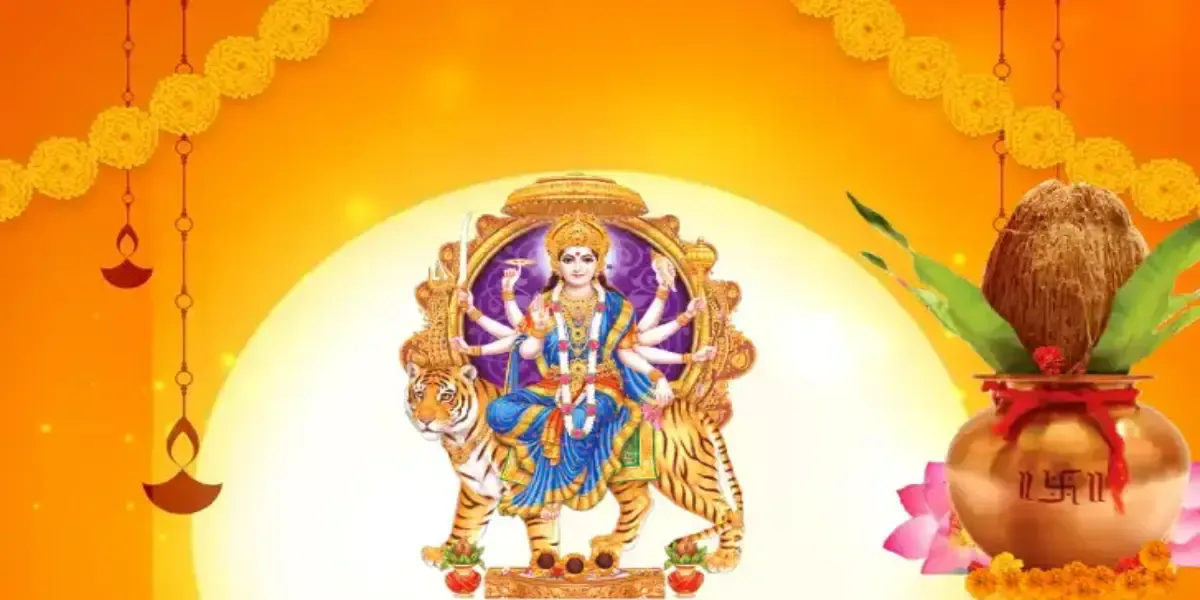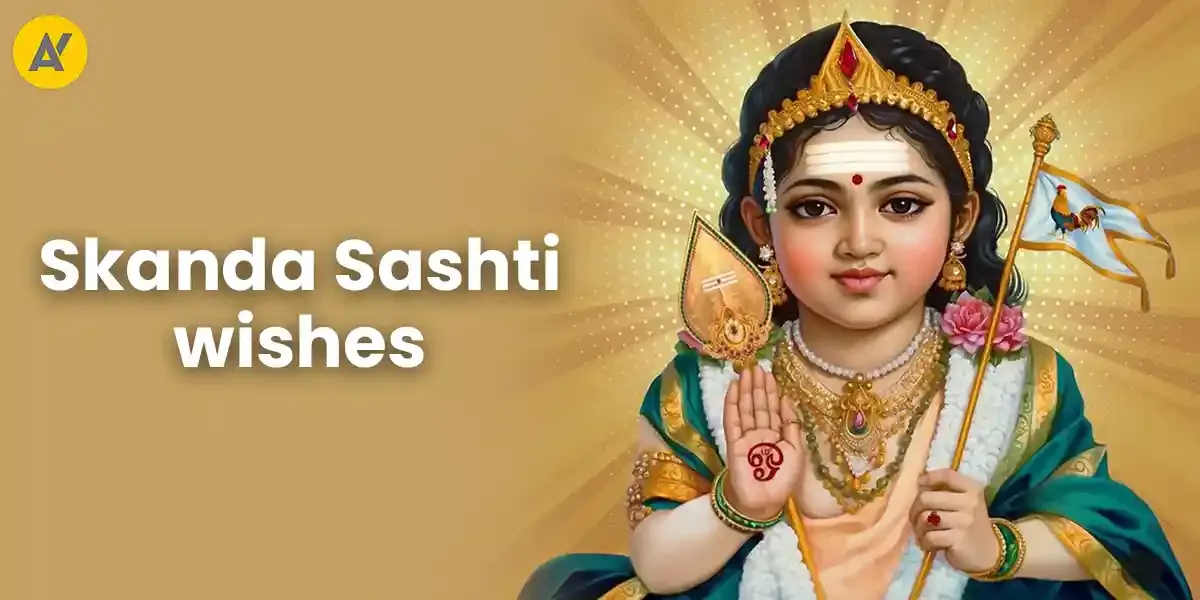
Ardent devotees are aware of the importance of Ghatasthapana, as it is an integral part of the Navratri festival. Ghatasthapana is a ritual performed on the first day of the 9-day Navratri festival. It is observed both during the Chaitra Navratri and Sharad Navratri. Undoubtedly, it is one of the most significant rituals during Navratri. The importance of this festival can be gauged from the fact that our scriptures have well-defined guidelines on how to perform Ghatasthapana at the beginning of Navratri.
Shardiya Navratri Ghatasthapana will be on 3rd October 2024 (Thursday).
Let’s get to know more about it.
Ghatasthapana Date And Time
Given below is the auspicious Ghatasthapana date and time that you should know about.
Ghatasthapana - 3rd October 2024 (Thursday)
Ghatasthapana Auspicious Muhurat (Auspicious Timing) - 06:15 AM to 07:22 AM
Ghatasthapana Abhijit Muhurat (Auspicious Timing) - 11:46 AM to 12:33 PM
The Ghatasthapana Muhurta or auspicious timing, falls on the Pratipada Tithi.
Pratipada Tithi Begins - 12:18 AM, 3rd October 2024
Pratipada Tithi Ends - 02:57 PM, 4th October 2024
The Shubh Muhurat or the propitious timing to do Ghatasthapana is on the first day, that too during the one-third of the day while Pratipada is going on. If, due to some reason, this time is not suitable or available, then Ghatasthapana can be done during the Abhijit Muhurat. However, Ghatasthapana shouldn't be done during Amavasya and at night. You are also recommended to avoid the Nakshatra Chitra and Vaidhriti Yoga during Ghatasthapana; however, these are not prohibited. The critical thing to remember is that Ghatasthapana should be performed while Pratipada is prevailing and before midday.
Explore More 👉 Today’s Panchang➔Today’s Tithi ➔ Today's Shubh Muhurat ➔ Today's Nakshatra ➔ Today's Choghadiya ➔ Today's Rahu Kaal
What is the significance of Ghatasthapana in Navratri?
Navratri means 'nine nights', and it is one of the most significant Hindu festivals, which is celebrated every year with a lot of enthusiasm and fervour. It is devoted to the worship of the divine Goddess Durga.
The first Navratri is celebrated during the Shukla Paksha of Chaitra (March-April). The other one, also known as the Shardiya Navratri or Maha Navratri, is celebrated on the bright fortnight of Ashvin month (September-October).
This festival is observed during Sharad. The ritual of Ghatasthapana signifies the beginning of the nine-day festivity. It also signals the beginning of the Dashain festival, which is celebrated in the northeastern states of India and also by our neighbours, Nepal.
Ghatasthapana, also known as Kalash Sthapana, is one of the most important rituals performed by the devotees on Navratri. Ghatasthapana is performed as an invocation of Goddess Shakti. As the name suggests, this ritual involves placing a Ghata or Kalash or urn or pot filled with holy water, symbolising Goddess Shakti.
Ghatasthapana is considered highly significant during Navratri celebrations because the sacred pot is the paramount object of worship. It is in this Kalash or pot where Goddess Shakti is invoked for nine days. During this time, the devotees should pray to Goddess Shakti and urge her to accept their prayers. The devotees should request the Goddess to reside in the holy pot or Kalash until the end of the Navratri festival, i.e., until the ninth day.
Devotees believe that Ghatasthapana should be rightly done at the correct time as per the rules laid down by our holy scriptures. If it is done at the wrong time, it can become the cause of Goddess Shakti's wrath.
Read also 👉 Shardiya Navratri 2024: Dates, Significance and Rituals
Ghatasthapana or Kalash Sthapana Samagri for Shardiya Navratri Puja
For Shardiya Navratri Puja Samagri, include essential items favored by Goddess Durga to ensure a successful worship. Use a red-colored asana, as red is her favorite color. Other important items for the puja are an earthen pot, barley, soil, an urn filled with water, cardamom, clove, camphor, moli (sacred thread), a whole betel nut, rice, coins to place in the urn or pot, five leaves of Ashoka or mango tree, a coconut, a red dupatta or chunni, flower garlands, makeup products, ittar (perfume), vermilion or sindoor, flowers, Durva grass, and fruits.
Goddess Durga likes the red colour; hence, make sure to purchase a red-colored Asana for her.
Earthen pot
Barley
Soil
Urn filled with water
Cardamom
Clove
Camphor
Moli (sacred thread)
Whole betel nut
Rice
Coins to put in the urn or pot
Five leaves of Ashoka or Mango tree
Coconut
Red dupatta or chunni
Flower garlands
Make-up products
Ittar
Vermilion or sindoor
Flowers
Durva grass
Fruits
What Are The Rules for Navratri?
The most crucial part of Ghatasthapana is installing the Kalash or pot filled with holy water. Goddess Durga or Shakti is requested to take residence in the Kalash or pot for the entirety of the festival. The devotees worship the Kalash or pot twice a day every day until the festival is over. The pot is kept away from sunlight. After this ritual, Goddess Shailputri is worshipped on the first day of Navratri. Devotees observe fasts during the auspicious nine days of this festival.
The Puja Vidhi, or procedure for Navratri Ghatasthapana, is given below:
On the first day of the festival, i.e., in the morning of Pratipada, take a bath early in the morning. Before the Ghatasthapana, make sure to clean your home's temple or the area where you want to perform the Ghatasthapana Puja. Choosing a place close to the worship area is the best idea. Once the cleaning is done, pray to Lord Ganesha and then light the 'Akhand Jyoti' dedicated to Goddess Durga that keeps burning throughout the nine days of Navratri.
Place a chowki of the goddess, and then put a wide clay or earthen pot near the chowki to sow barley seeds.
Put a layer of soil into a wide earthen pot and sow the barley seeds in it. Then put more soil over it and sprinkle water on it.
Then take the Kalash or pot and make a swastika on it. Then tie the sacred thread on the Kalash. After this, pour the water of the holy Ganges in it along with pure water.
Put flowers, coins, durva grass, betel nut, and perfume or Ittar in it. Also, put the five leaves of the Ashoka or Mango tree on top of the Kalash. After that, put a lid on it and fill it up with raw rice.
Take a coconut and wrap it with a red cloth, and tie a Moli around it. After that, apply tilak on the coconut, and place the coconut on top of the Kalash.
Thereafter, place the Kalash on the wide clay or earthen pot on which you had sown barley. The Kalash is believed to be the symbolic form of Goddess Durga.
Light a lamp and worship Goddess Durga and all the other Gods. Invoke the Goddess with complete devotion, and pray to her to destroy all your troubles and offer you wisdom.
With the establishment of the Kalash, devotees take the resolution to keep the nine fasts of the Navratri. The Kalash is considered a symbol of prosperity, happiness, and good luck, so it is considered auspicious to establish the Kalash on the occasion of Navratri. Hence, devotees should observe this ritual with complete devotion.
If you wish to know more about Ghatasthapana 2024 or its methodologies or have any astrology related questions, then feel free to turn to the Astroyogi astrologers for guidance.
Upcoming Festivals:👉 Navratri ➔ Durga Puja ➔ Dussehra ➔ Dhanteras ➔ Diwali
Our in-house team of writers comprises of vibrant, like-minded, and curious souls who are passionate about helping people find joy and motivation through the magic of words. Our writers are keen on using their skills to make the study of divination sciences a guiding tool in people's lives. They hold expertise in writing on a myriad of topics related to Indian Astrology, Spirituality, Planetary Movements, Vastu Shastra, Numerology, and Tarot among several others. The Astroyogi team aims to write articles that can help the readers lead a life of peace and tranquility whilst enjoying the many ups and downs of life!


































